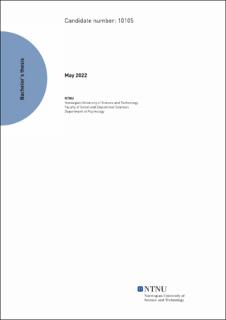Sammendrag
Perception of audiovisual (AV) synchrony is affected by experience with temporal delays between auditory and visual signals. Recent studies using a “simultaneity judgment” (SJ) task, indicate similar changes in perception of AV synchrony following repeated and brief exposure, often referred to as temporal recalibration and rapid recalibration. The brain adapts perception of AV synchrony by altering the temporal binding window to audiovisual experience. Studies show that the perceiver is more sensitive to audio-lead asynchrony than video-lead asynchrony, indicating an asymmetrical TBW biased towards video-lead input. The current study researched the replicability of rapid recalibration and the TBW thresholds´ adaptability to brief AV experience using a SJ task. The stimulus consisted of audio-video-justifications of the audio /ba/. Previous studies indicate that simultaneity judgements are represented more precisely when fitted two cumulative Gaussians than the usually used Gaussian. Two cumulative Gaussians were therefore fitted SJ-responses in the current study. Four different one-way repeated measures ANOVAs showed rapid recalibration effects for ALT, VLT and point of subjective simultaneity (PSSaverage). The analysis showed that brief experience with AV speech affects ALT more than VLT and PSSaverage. Results indicate that two cumulative Gaussians are more sensitive to differences in the SJ-data than a Gaussian. The present study's findings can be further used to develop training programs to adjust the ALT and the VLT; narrowing broadened temporal binding windows correlated with neurological disorders.
